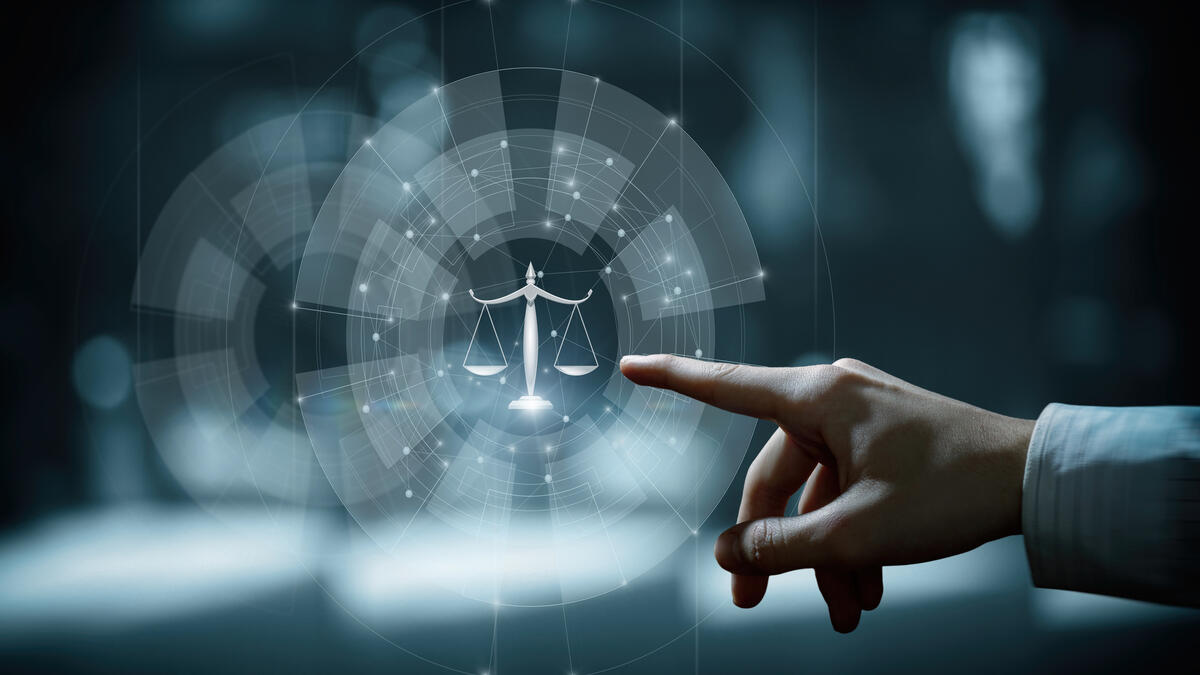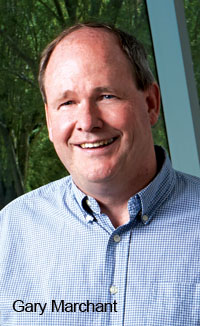Regulating euphoria, mood enhancement technology and the legal future of ChatGPT.
These and other topics will be addressed at the 10th annual Governance of Emerging Technologies and Sciences, or GETS, conference, which takes place May 18–19 at the Beus Center for Law and Society in downtown Phoenix.
Hosted by Arizona State University’s Sandra Day O’Connor College of Law, the two-day event addresses ethical and legal issues surrounding ChatGPT and many other emerging technologies. Participants will have the opportunity to learn about successful policy and regulatory responses that can be applied across a broad spectrum of technologies and industries.
“Since GETS began, there have been a lot of new events and conferences focusing on governance of a specific emerging technology,” said Gary Marchant, Lincoln Professor of Law, Ethics and Emerging Technologies at ASU. “GETS is different in that it addresses governance of dozens of different technologies.”
The forum will feature 22 sessions and more than 100 speakers — scientists, lawyers, regulators, philosophers, ethicists and academics — coming from across the country and as far away as Belgium, Taiwan and Africa. More than 200 people are registered for the event. Sessions include "Augmented Reality and the Law," "Reining in Big Tech" and more.
“We wanted to create a forum, even a community, that would bring together people from different disciplines, working on different emerging technologies and at different stages of their career,” said Marchant, who is also a Regents Professor and faculty director for ASU’s Center for Law, Science and Innovation.
Here, Marchant talks about conference and the importance of these discussions.
Note: The following answers have been edited for clarity and brevity.
Gary Marchant
Question: The conference is now in its 10th year. Were you instrumental in launching it?
Answer: Yes.The idea for the conference originated when I was visiting a Yale scholar, Wendell Wallach, who also works on governance of several different emerging technologies. We realized that challenges facing governance efforts in many different technologies were similar and that it would be useful to have a forum where experts in the governance of many different technologies could meet and cross-fertilize approaches, successes and failures.
We came to a flash of inspiration to produce such a conference and that was how GETS was created.
Q: Why is a conference like this important?
A: Traditional government regulation is unlikely to be effective with most emerging technologies. So, we need new innovations in governance and that’s what this conference focuses on.
Q: Speaking of innovations, do GETS attendees learn about the latest technologies?
A: GETS is a great event for learning about all the latest developments in technology, as there are always exciting and new developments every year. Artificial intelligence and in particular generative AI, such as ChatGPT, will be a major focus this year, given the rapid developments and need for governance experienced over the past year.
But there are also important new developments and presentations in technologies such as blockchain and crypto, data privacy and security, genomics, augmented reality, synthetic biology and many others.
Q: What new legal and ethical issues have accompanied new advances in technology?
A: Many emerging technologies present safety, health or environmental concerns, like many past technologies. But many of these technologies raise other issues that are more difficult to govern and are outside the scope of existing regulatory authority — including issues such as privacy, human enhancement, discrimination and bias, job displacement and human autonomy.
Emerging technologies are raising new legal issues, such as: Can employers or governments require monitoring of our brain patterns? Who bears the liability when an AI system independently decides to take an action that harms people? Does an AI program that uses publicly available art to train on and produce its own artwork … violate the artists’ intellectual property rights? And on and on …
Q: How do policy and regulatory solutions keep up with the speed with which new technologies are emerging?
A: The “pacing problem” recognizes that government lawmaking is going slower than ever before, while technology is speeding up, creating a growing gap between technology and law. Other types of governance, that do not rely exclusively on bureaucratic government agencies, are needed to govern these emerging technologies. The GETS conference focuses on what those new governance models might look like.
Photo credit: iStock.com
More Law, journalism and politics
Can elections results be counted quickly yet reliably?
Election results that are released as quickly as the public demands but are reliable enough to earn wide acceptance may not always be possible.At least that's what a bipartisan panel of elections…
Spring break trip to Hawaiʻi provides insight into Indigenous law
A group of Arizona State University law students spent a week in Hawaiʻi for spring break. And while they did take in some of the sites, sounds and tastes of the tropical destination, the trip…

LA journalists and officials gather to connect and salute fire coverage
Recognition of Los Angeles-area media coverage of the region’s January wildfires was the primary message as hundreds gathered at ASU California Center Broadway for an annual convening of journalists…



